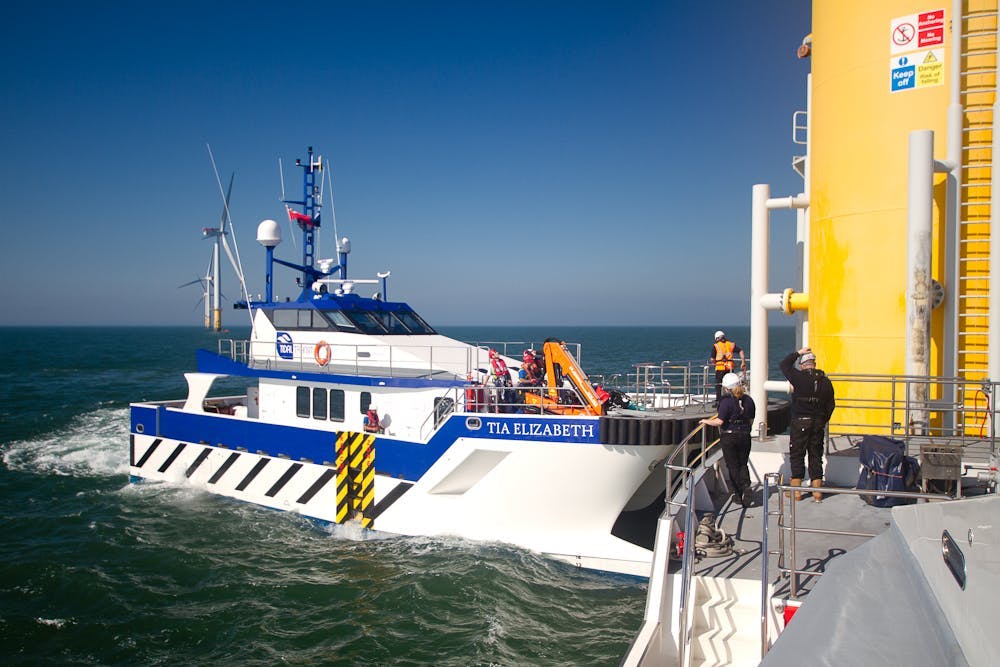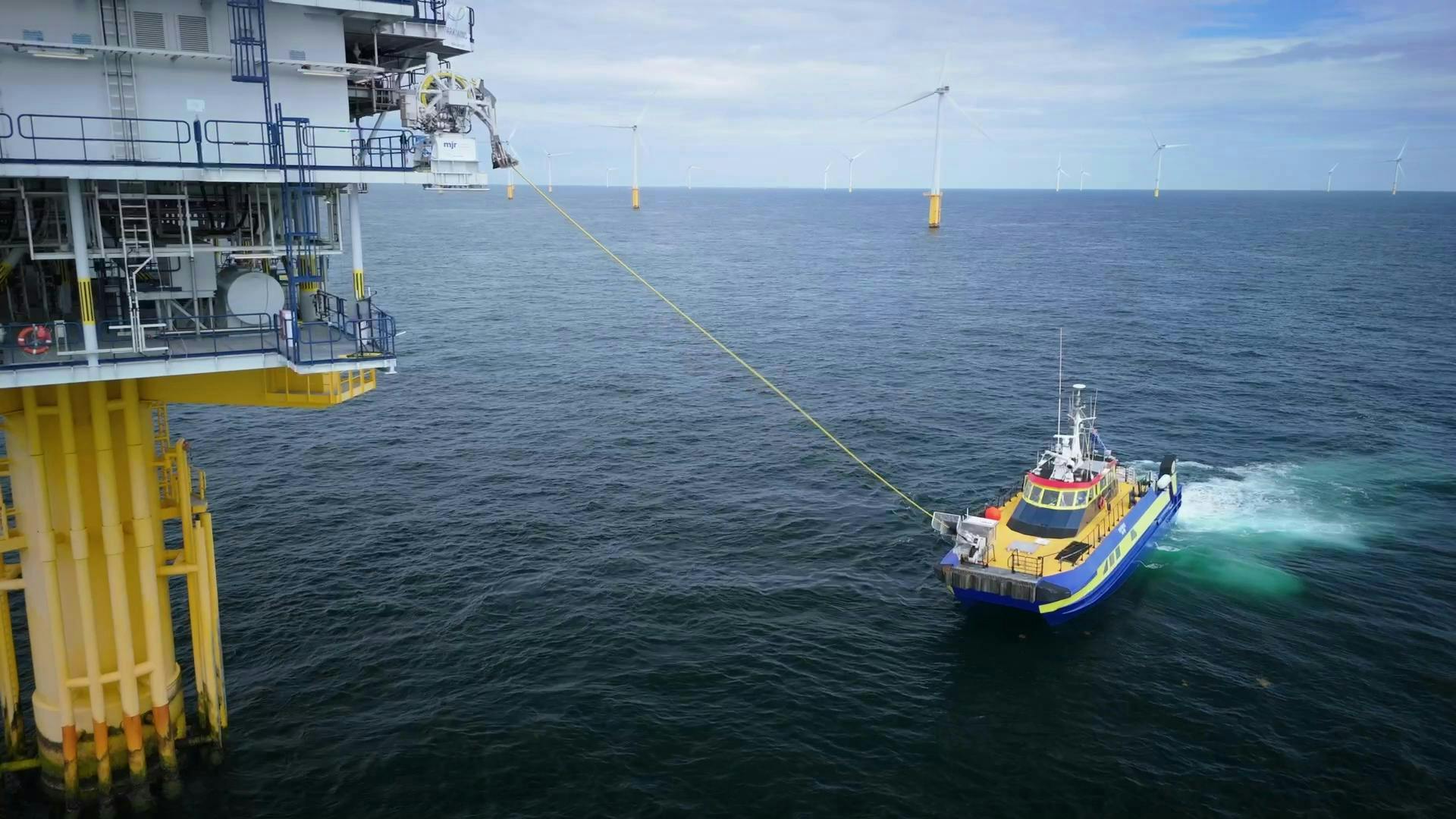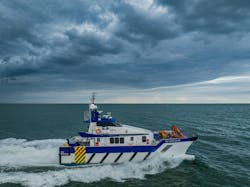Opinion: Embracing the circular economy potential of offshore wind
By Leo Hambro, Tidal Transit
Offshore wind power is a cornerstone of the global transition to clean energy and offers a scalable solution for reducing carbon emissions and accelerating the transition to net zero. As the UK ramps up investments in the sector, the environmental and economic benefits of offshore wind are clear—wind power is essential for increasing energy security, phasing out fossil fuels and combating the hazardous effects of climate change.
As the industry continues to grow, however, a critical question emerges: does offshore wind have a place in the circular economy?
True circularity encompasses a closed-loop system where resources are kept in the value chain for as long as possible, rather than discarded, and products are designed with end-of-life reuse and repurposing in mind.
Within this model, reusing materials and components helps to limit dependence on virgin resources and alleviates the carbon emissions associated with materials extraction and processing. This offers vast environmental and economic benefits on top of those provided by clean energy. But what is the current status of resource circularity in offshore wind, and how can the industry evolve to truly find its place in the circular economy of the future?
Offshore wind: the circular economy challenge
Wind power can be a double-edged sword. While the energy output of offshore wind is renewable and undeniably green, the same cannot always be said for the materials and assets that support it. True circularity goes far beyond the production of clean energy, and the push for the circular economy of offshore wind has so far largely focused on the sustainable material use, most notably for turbines themselves.
Offshore turbines require large quantities of steel, iron, fiberglass, plastics and rare-earth metals, and they often contain composite materials that are notoriously difficult to recycle, while many of their components have limited end-of-life options. A push toward increasing the circularity of turbine materials has, and will continue to, involve rethinking multiple stages of a turbine’s life, from its design and material sourcing to maintenance, decommissioning, and eventual recycling or reuse.
To achieve a fully circular and sustainable model in offshore wind, however, it is not enough to focus on turbines alone. For the sector to secure its place in the circular economy, we must think more holistically and consider the full material life cycle of the wider supporting infrastructure as a whole.
Circularity beyond the turbine
The entire offshore wind ecosystem, including the service fleets that support wind farms, must be part of the circular economy equation.
SOVs and CTVs are typically powered by diesel, built with steel, aluminium and composites, and contribute to the carbon footprint of the offshore wind sector. A typical CTV can burn about 1,500 liters of fuel per day in operation and, after years of service, will then eventually face decommissioning, presenting an additional waste and resource challenge. The key to reaching circular offshore wind, then lies in finding new energy sources, improving fuel efficiency and strengthening the resource circularity of vessels and their related infrastructure.
Circular economy of vessel design and innovation
Designing vessels for durability and longevity is a critical step toward reaching a more circular-focused industry. By building vessels with modular components, where individual parts can be replaced without requiring the entire ship to be scrapped, manufacturers can extend operational lifespans significantly and future-proof vessels against rapidly evolving technological advancements.
One such advancement is the shift toward hybrid and fully electric CTVs and SOVs, which will reduce and eventually replace the need for diesel entirely. This idea of fully electric vessels is not as far-fetched as one might presume.
As battery technology evolves, prices have reduced significantly while performance has improved markedly—so much so that modern batteries lose only about 20% maximum capacity over a 10-year life cycle. While energy storage at 80% capacity is still functional, when batteries do eventually need replacing, they can be given a second life in a number of ways back on shore, which is a clear win for the move toward circularity.
Of course, the transition to hybrid and fully-electric vessels cannot happen overnight, and it’s for this reason that the ships of today must be designed with an electric future in mind.
Instead of scrapping older vessels, the industry can improve its circularity by adopting robust refurbishment and retrofitting practices. By upgrading CTVs and SOVs with newer, more efficient technologies, companies can extend the service life of existing ships while reducing the need for new materials and construction.
Retrofitting diesel-powered vessels with hybrid or electric systems, for instance, would make for a significant step toward a more circular economy by eliminating the need for fossil fuels while at the same time alleviating the resource challenges associated with decommissioning older vessels.
Future-proof vessels: a case in point
As part of its landmark "e-Ginny" retrofit project, the company is transforming a diesel-powered vessel, Ginny Louise, to achieve 100% emissions-free operations.
To accomplish this feat, e-Ginny is being fitted with over 3 megawatt-hours (MWh) of battery capacity, electric motors and propulsion pods, completely eliminating the need for fossil fuels. Crucially, having already provided 12 years of service to the offshore wind industry, e-Ginny’s lifespan will be greatly extended, and she can now continue to support wind operations for at least another 12 more years to come.
In addition, the company also recently expanded its existing fleet with a new frontrunner for all future electric builds, Arabella Jane. This is a fuel-efficient, retrofittable CTV specifically designed and engineered with electrification in mind.
Future of offshore wind in a circular economy
Offshore wind can only fulfill its potential as a foundation of clean energy if the entire ecosystem is considered in the transition to a circular economy. Turbines, CTVs, SOVs and supporting infrastructure must all be designed, maintained and decommissioned in a way that prioritizes longevity, efficiency and reuse.
Achieving this will require collaboration across industries—between shipbuilders, wind farm operators and policymakers. By fostering innovation, embracing new policies and encouraging collaboration, offshore wind can be a model of circularity, where waste becomes a resource and renewable energy truly lives up to its name.
A truly circular offshore wind economy is not only possible but essential if a fully sustainable energy system is to be achieved. By addressing the circularity potential of CTVs and SOVs, in addition to turbines, the offshore wind sector can move closer to becoming the zero-waste, renewable energy solution that the world needs.
About the Author

Leo Hambro
Leo Hambro is the co-founder and commercial director of Tidal Transit.
Founded in 2011, Tidal Transit pioneers electric-powered access, transport and crew transfer services for the offshore energy sector in the UK and Europe. Prior to setting up Tidal Transit, Hambro's career was primarily in commodities and renewables, including bioethanol from sugar and biomass from timber.




